Honey Fungus Can Target The Roots Of Woody Plants – Here’s How To Manage An Outbreak


Ed is a horticultural therapist, professional gardener and writer. Ed has a BSc in Occupational Therapy from Coventry University and a Diploma in Social and Therapeutic Horticulture (DipSTH) via Thive, the RHS and Pershore College. Ed runs a community kitchen garden in West Sussex, where he leads horticultural therapy sessions.
Reviewed By ROY NICOL

Roy is a Professional Gardener and Horticultural Consultant, specialising in large garden year-round maintenance and garden development. He is an RHS Master of Horticulture and uses his research in the application of no-dig methods in ornamental garden settings. Roy has been a Professional Gardener for more than six years and is a member of the Chartered Institute of Horticulture, Professional Gardener's Guild and Association of Professional Landscapers (Professional Gardener).
Honey fungus is a serious fungal disease that has the capacity to destroy certain shrubs, trees and perennial plants in the garden.
Unfortunately, honey fungus can be a severe problem if identified in the garden and can lead to the loss of multiple specimens, as limited controls are available.
However, if found to be present, prompt action can help to prevent its potential spread.
What Is Honey Fungus?
Honey fungus encompasses several species of Armillaria fungus that target and kill the roots of many woody plants and is considered to be a factor in oak decline, a disease affecting oak trees.1Armillaria – honey fungus. (2022, February 9). Forest Research. Retrieved March 17, 2023, from https://www.forestresearch.gov.uk/tools-and-resources/fthr/pest-and-disease-resources/chronic-oak-decline-dieback/biotic-and-abiotic-factors-which-contribute-to-oak-decline/armillaria-honey-fungus/
The fungus can produce honey-coloured toadstools in late summer or early autumn, giving the fungus its common name.

Armillaria mellea and A. gallica are the most common honey fungus species to be found present in gardens here in the United Kingdom.2Incidence of Armillaria species in U.K. gardens. (2017, July). ResearchGate. Retrieved March 17, 2023, from https://www.researchgate.net/figure/Incidence-of-Armillaria-species-in-UK-gardens-A-A-gallica-B-A-mellea-and-C-A_fig2_318250914
A parasitic fungus, armillaria can attack both broadleaf and coniferous shrubs and trees, along with some herbaceous perennials.
Sadly, widespread here in the UK, it is also present in parts of Europe and North America.
Identifying Honey Fungus
Honey fungus can be hard to identify as it spreads under the soil surface and does not always produce the honey-coloured toadstools that are visible above ground.
The clumps of honey-coloured toadstools appear from the end of summer onwards.
However, these mushrooms tend not to appear until the disease is already well established and shrubs and trees are badly infected.

The toadstools tend to grow in clumps on living and dead wood.
The mushroom caps are brown on top with white gills underneath, which turn brown over time and can develop a wavy edge as they mature.
A white collar is present on the stems underneath the gills.
Reaching a height of 10-15cm their stems can grow to 1.5cm in diameter.
Other tell-tale signs that honey fungus is present, is the display of rhizomorphs or ‘black bootlaces’ in the soil around the plant or under the bark, along with white growths called mycelium, which grow between the bark and the wood underneath.3Honey Fungus. (n.d.). NatureSpot. Retrieved March 17, 2023, from https://www.naturespot.org.uk/species/honey-fungus

“The most reliable way to identify honey fungus is by peeling back the bark at the base of the tree or shrub where the white mycelium will be evident, along with a strong smell of mushrooms,” shares Master Horticulturist Roy Nicol.
“Rhizomorphs often can’t be seen, but the best chance to spot them is where they are attached to the root at the base of the plant.”
However, often the first signs of honey fungus aren’t the toadstools or bootlaces, but reduced plant vigour, dieback of growth, loss of flowers, pale foliage and cracking and bleeding at the base of the tree.
These can all easily be mistaken as symptoms of other diseases or problems other than honey fungus.
Causes & How It Spreads
In the wild, honey fungus is rarely an issue as other fungi growing in the area limit its growth.
However, in cultivated gardens where fungi are often discouraged, honey fungus can take over as other species are not present to keep it in check.
Honey fungus mainly spreads underground by way of the rhizomorphs under the soil as well as from infected roots transmitting the disease to other plants’ root systems nearby.4Wingfield, M. (2004). Armillaria. Science Direct, 816–822. https://doi.org/10.1016/b0-12-145160-7/00062-4

The fungi can also produce spores and the latest research indicates some species such as A. mellea may spread by spore dispersal and then via the underground rhizomorphs.5Armillaria. (n.d.). ScienceDirect Topics. Retrieved June 19, 2023, from https://doi.org/10.1016/B978-0-323-85042-1.00004-5
The rhizomorphs travel under the soil at a depth of 15-45cm and at a frightening pace of up to 1m a year until plants up to 30m away are attacked.
This speed, along with the fact that it is often unnoticeable until too late, is why honey fungus can affect large parts of a garden in a relatively short time.
Which Plants Are Most At Risk?
Regrettably, no plants are totally resistant to succumbing to honey fungus, however, it does seem to target some plants a lot more readily than others.
The Royal Horticultural Society (RHS) now provides an updated list of plants more susceptible to honey fungus.6Honey fungus plant list. (n.d.). Royal Horticultural Society. Retrieved March 17, 2023, from https://www.rhs.org.uk/advice/pdfs/honey-fungus-host-list.pdf
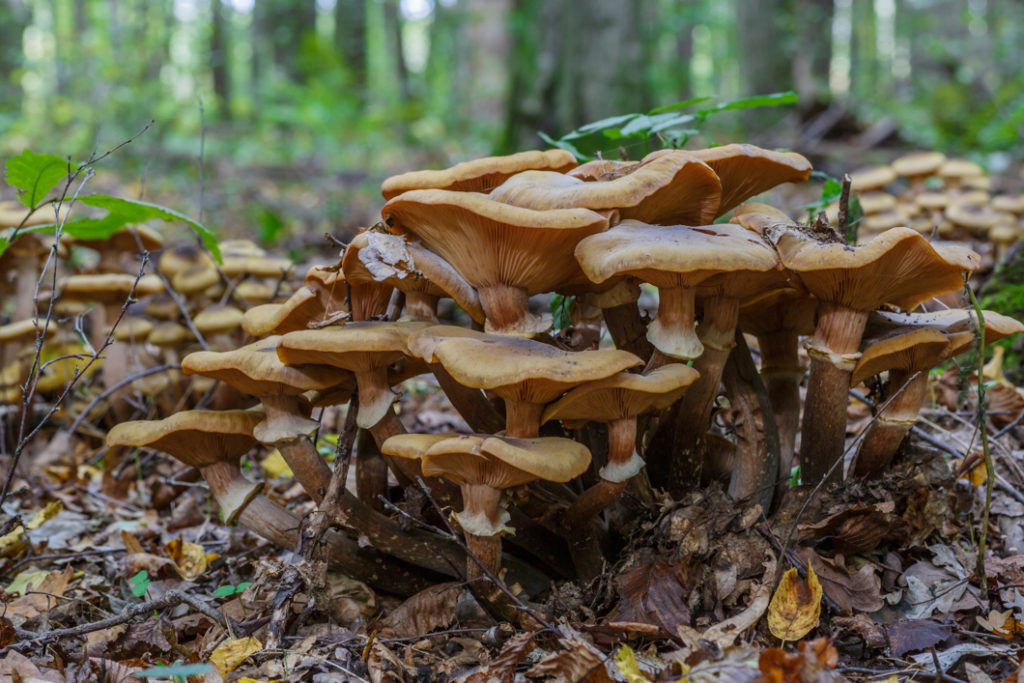
Common garden plants which are highly susceptible to the disease include Lilac, Viburnum, Cotoneaster, Weigela, privet, Photinia, Forsythia, Buddleja, Ceonothus and Acers.
“A common cause of honey fungus spread I have found in gardens are where susceptible trees, such as Oak, Willow, Horsechestnut, Birch, Cedar, Walnut and Leyland Cypress, are infected and then cut down,” shares Peter.
“The fungus then spreads to garden plants looking for new sources of material to consume.”
How To Manage An Outbreak
Not to scare, but the largest area of honey fungus discovered so far is in a forest in Oregon, USA and covers an area of approximately 965 hectares.7Casselman, A. (2007, October 4). Strange but True: The Largest Organism on Earth Is a Fungus. Scientific American. Retrieved March 17, 2023, from https://www.scientificamerican.com/article/strange-but-true-largest-organism-is-fungus/
However, this infected area is thought to be thousands of years old and has had a lot of time to grow and spread.
Honey fungus is not a notifiable disease – nevertheless, if an outbreak is identified, it is advisable to take swift action to minimise the possible damage.
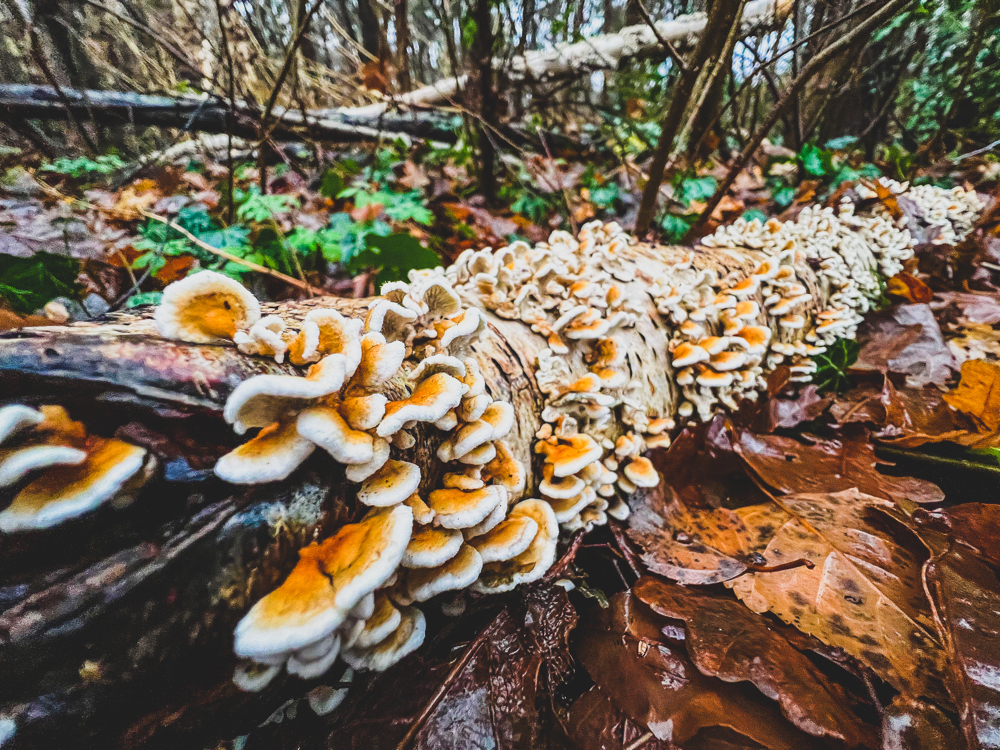
Noting which shrubs and trees and their locations around the garden have previously been, or currently are infected, can be helpful in working out which areas the fungus is present and demand focussed treatment.
Strategies to manage an outbreak can include maintaining good plant health, limiting the spread of the disease and removing any sources of the fungus.
Since honey fungus can be so difficult to eradicate, a combination of all these strategies is often advocated.
Honey Fungus Treatment
Removal of Affected Material
Treatment for honey fungus is unfortunately limited, as there are no chemicals or fungicides currently approved to treat the disease.
The only surefire way of eradicating the fungi is by completely removing and destroying the affected material, as labour-intensive and destructive as this may be.

When removing an infected shrub or tree, its entirety must be gotten rid of including the stump and infected root system, as, without any infected material to feed off, the honey fungus rhizomorphs will die.
Honey fungus has been known to continue growing on infected wood even after felling.
Therefore, it is recommended to either dispose of all the infected material either at a managed landfill site or through burning.
Reduce Honey Fungus Spreading
Stopping the spread of the honey fungus is a key part of any treatment and keeping the rest of the garden disease free.
This can be achieved by installing a tough plastic sheet barrier, such as a butyl liner, to a depth of 50cm around the infected area and by removing the adjacent plants, even if healthy.
If part of a hedge is infected with the honey fungus it is recommended to remove at least one healthy plant on either side of the infected specimens to prevent any further spread.

The disease can also be reduced by cultivating the area and leaving the affected site fallow for at least one year, which will allow the removal of any bootlaces and any existing fungus to die off from lack of a host to feed off.
If the idea of leaving the treated area, which can be large, fallow and bare for a long time is too much, then the site can be covered with a woven weed membrane and hidden by a layer of gravel, interspersed with planted-up containers.
Grassing over the treated area can also be an option.
However, even though this can be considered a more aesthetic option, it is not considered to be as effective as leaving the site bare.
Promoting Plant Health
Promoting plant health is also key in the prevention of honey fungus disease.
Healthy plants which are pruned correctly and watered and fed as necessary will be able to potentially resist the disease better than those which are neglected.
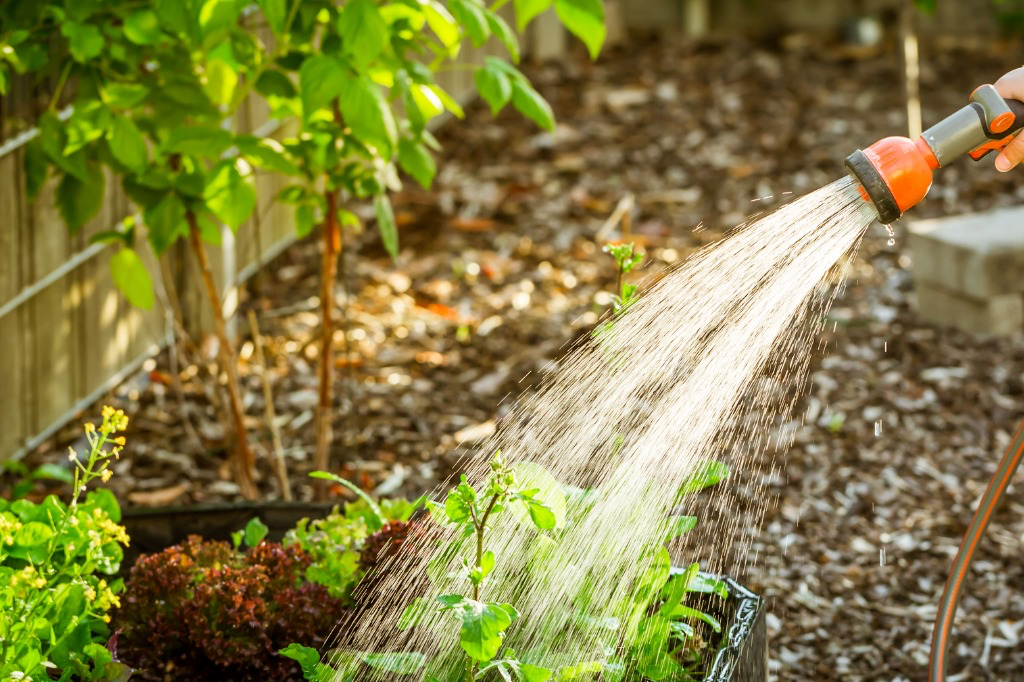
Ensuring that any shrubs and trees within the vicinity of the disease are planted at their correct depth will also help prevent them from succumbing to honey fungus, as if planted too deeply, they are more susceptible.
Resistant Trees & Shrubs
Once the site has been cleared and left fallow for the appropriate length of time, replanting with resistant specimens is strongly advised in case any of the fungi or disease is still left in the soil.
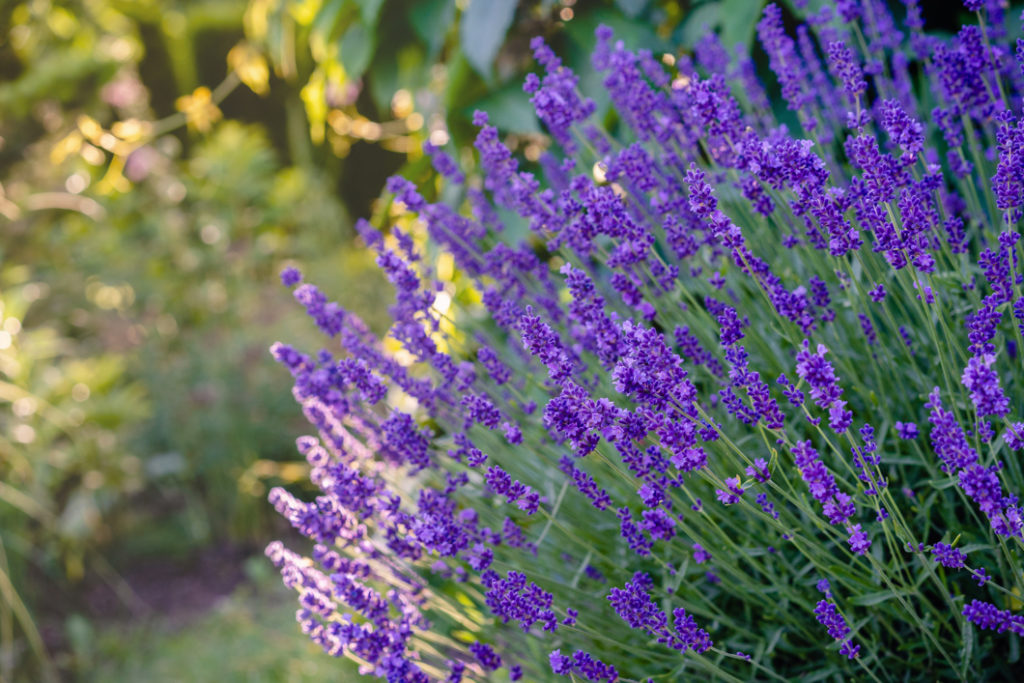
The RHS recommends replanting with species that are rarely affected by honey fungus, which includes lavender, yew, pittosporum, acacia, cotinus, hydrangea, philadelphus, salvia and pear trees.8Honey fungus. (n.d.). Royal Horticultural Society. Retrieved March 17, 2023, from https://www.rhs.org.uk/disease/honey-fungus
FAQs
Does Honey Fungus Always Spread?
Unfortunately, honey fungus does not only always spread, but it can spread at a distance of 1m per year and infect nearby shrubs and trees with alarming speed.
How Long Does Honey Fungus Stay In The Soil?
Being parasitic, honey fungus can exist for many years if it has material to live off.
However, if all of the infected trees and shrubs are removed, along with all their roots, then one year is the suggested time frame to wait before replanting the area.

As a test, a few strawberry plants can be planted in the treated area before replanting, which if the disease is still present, will die within weeks and indicate that the site must be left for longer.
Should You Remove Fungus From A Tree?
Removing honey fungus toadstools alone from a tree or shrub is not recommended as the disease is most present in the plant, its roots and under the ground.
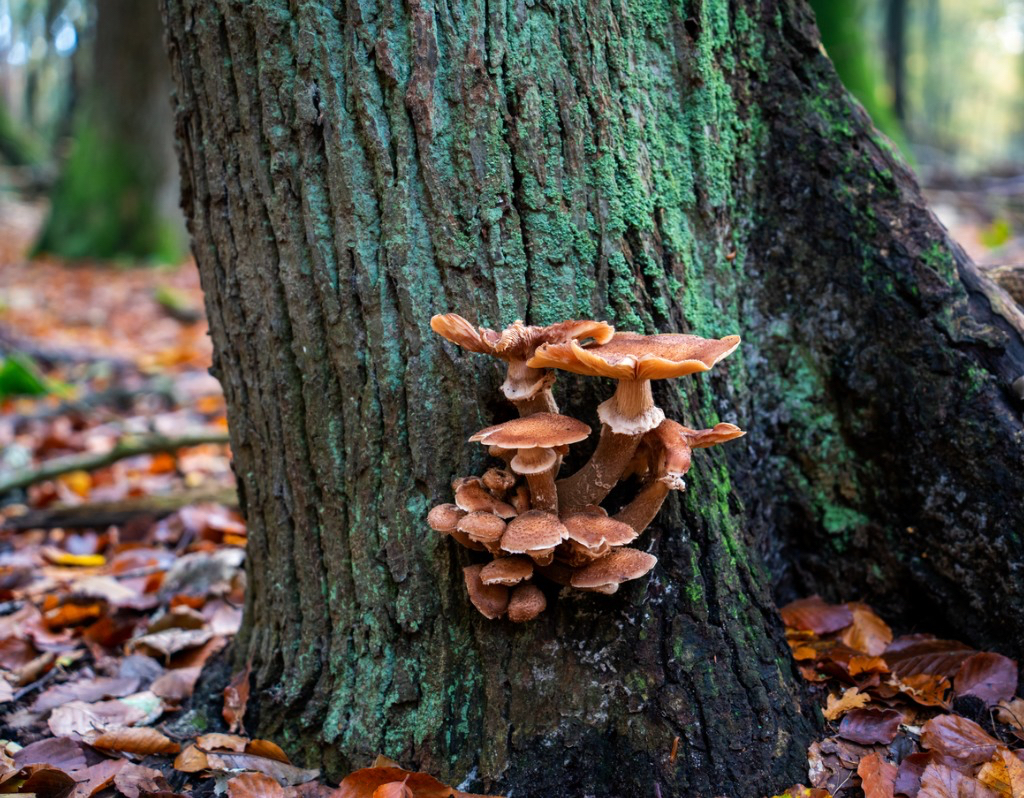
It is advisable to remove all of the fungi, shrubs, trees and roots at the same time and dispose of them judiciously.
Does Jeyes Fluid Kill Honey Fungus?
In the past, Jeyes Fluid or Armillatox has sometimes been used for the purpose of trying to sterilise the soil surrounding any infected trees or shrubs with honey fungus.
However, using these products for this use has since been banned (see the list of RHS Withdrawn Chemicals for more insight). There is no chemical control currently approved.
References
- 1Armillaria – honey fungus. (2022, February 9). Forest Research. Retrieved March 17, 2023, from https://www.forestresearch.gov.uk/tools-and-resources/fthr/pest-and-disease-resources/chronic-oak-decline-dieback/biotic-and-abiotic-factors-which-contribute-to-oak-decline/armillaria-honey-fungus/
- 2Incidence of Armillaria species in U.K. gardens. (2017, July). ResearchGate. Retrieved March 17, 2023, from https://www.researchgate.net/figure/Incidence-of-Armillaria-species-in-UK-gardens-A-A-gallica-B-A-mellea-and-C-A_fig2_318250914
- 3Honey Fungus. (n.d.). NatureSpot. Retrieved March 17, 2023, from https://www.naturespot.org.uk/species/honey-fungus
- 4Wingfield, M. (2004). Armillaria. Science Direct, 816–822. https://doi.org/10.1016/b0-12-145160-7/00062-4
- 5Armillaria. (n.d.). ScienceDirect Topics. Retrieved June 19, 2023, from https://doi.org/10.1016/B978-0-323-85042-1.00004-5
- 6Honey fungus plant list. (n.d.). Royal Horticultural Society. Retrieved March 17, 2023, from https://www.rhs.org.uk/advice/pdfs/honey-fungus-host-list.pdf
- 7Casselman, A. (2007, October 4). Strange but True: The Largest Organism on Earth Is a Fungus. Scientific American. Retrieved March 17, 2023, from https://www.scientificamerican.com/article/strange-but-true-largest-organism-is-fungus/
- 8Honey fungus. (n.d.). Royal Horticultural Society. Retrieved March 17, 2023, from https://www.rhs.org.uk/disease/honey-fungus
